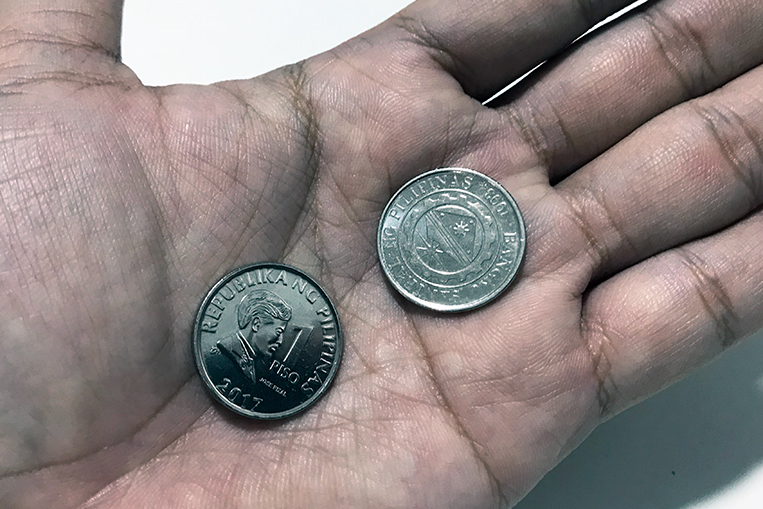
If you have not been paying attention to the whole issue about ride-hailing company Grab being in hot water right now for secretly adding a P2-per-minute charge to its rate beginning in June last year, I will try my best to get you up to speed.
So, what happened and why is Grab in this huge clusterfuck at the moment?
Okay, first, a definition of concepts.
These transport network companies (Grab, Uber) provide what regular taxicabs do—that is, bring you from one point to another—but with several conveniences. For one, you get to book a ride just by using your smartphone so you don’t have to stand under the heat of the sun while looking for a cab. Also, the cars are much nicer—they’re generally newer and cleaner, plus they’re unmarked, so it feels like you have your own vehicle with a chauffeur to boot. But all of these require a different fare computation compared to the old-fashioned metered system of ordinary cabs. Both Grab and Uber employed their own algorithm in doing this.
For Uber, it was:
- P40 base fare;
- P5.7 per kilometer; and
- P2 per minute.
For example, if an Uber passenger went on a 3km trip from Bonifacio Global City to some point in Makati, and that trip took 15 minutes, the passenger would be charged with the following fare:
P40 (base fare) + P17.1 (P5.7 times 3) + P30 (P2 times 15) = P87.1
On the other hand, Grab had the following formula:
- P30 or P40 base fare (Grab’s website and recent statements vary); and
- P12 per kilometer.
Using the same illustrative trip mentioned above, a passenger would pay the following fare with Grab:
P30 or P40 (base fare) + P36 (P12 times 3) = P66 or P76
Notice that Grab didn’t charge a per-minute fee. That was part of the company’s come-on. On its website, Grab boasted:
Manila traffic can be crazy and we don’t want Grabbers worrying about the meter ticking while stuck on EDSA. That’s why we don’t charge per minute, regardless of the time spent on the road!
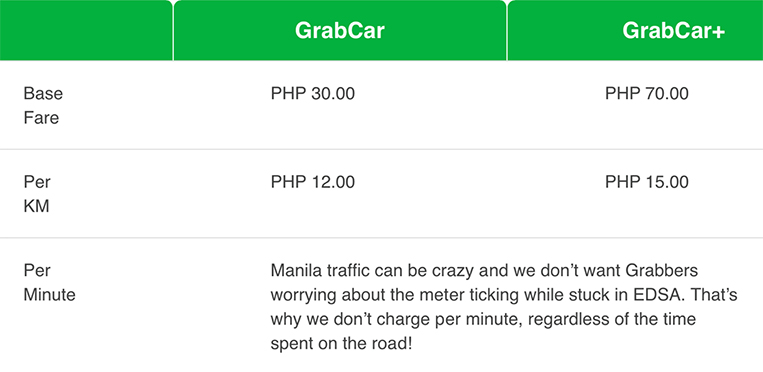
So all this time, Grab customers believed they weren’t being charged on a per-minute basis. They were aware, however, that special circumstances like rush hour, high demand or traffic congestion could activate surge pricing (up to twice the amount), which was how Grab and Uber compensated for unfavorable factors. Surge rates notwithstanding, Grab passengers were secure in the knowledge they weren’t paying for their time inside a Grab car.
That was probably true until June (or July, depending on what statement Grab executives feel like quoting) last year, when Grab very sneakily tucked a P2-per-minute charge into its fare computation—without proper approval from the Land Transportation Franchising and Regulatory Board, and certainly without notifying its customers, as Grab Philippines country head Brian Cu himself has admitted.
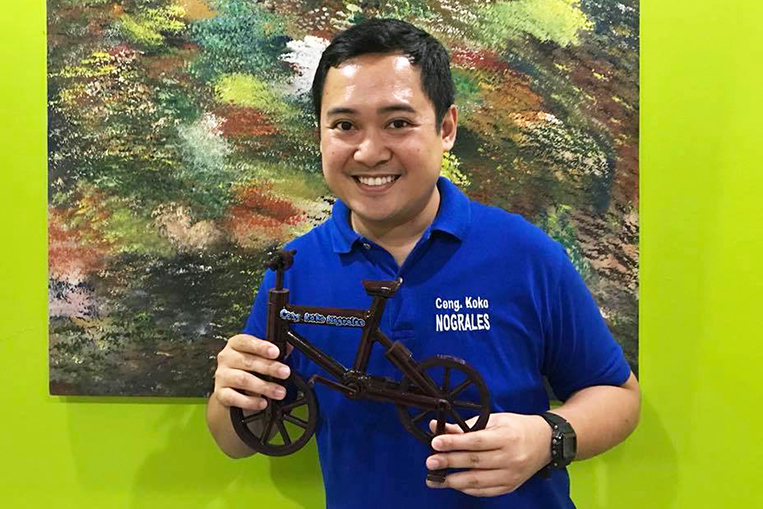
In fact, if party-list representative Jericho Nograles hadn’t stumbled upon this hidden charge, Grab would still be screwing its passengers as you read this—without their knowledge—and we all wouldn’t be talking about the issue in the first place.
Today, Rep. Nograles narrated to me how he found out. It was “gut feel,” he said.
“I tried simulating how the fare was calculated, and I couldn’t match it with the posted rates on Grab’s website,” he shared. “I asked Grab’s customer service for a breakdown, and they, in so many words, denied it [irregularity]. So from being curious, I became suspicious. I called [Grab spokesperson] Leo Gonzales’s attention to the matter. Eventually, he sent me a breakdown through Viber. Meron palang P2 per minute.”
Nograles then gave me the timeline of how it all unraveled:
January 22
- 13:00 – I took a trip with Grab
January 24
- 11:49 – I requested a fare breakdown
- 12:33 – First Grab reply: no breakdown, only official receipt
- 12:51 – I reiterated my request
- 13:11 – Second Grab reply: no breakdown
- 14:41 – I reiterated my request
January 29
- 17:59 – I followed up on my reiterated request
- 18:00 – I spoke with Leo Gonzales to bring up my issue regarding breakdown of fares
January 30
- 15:24 – I received a Viber message from Leo with breakdown of fares
February 1
- 14:57 – I received acknowledgment via e-mail that the Viber response of Leo was the official response of Grab
The lawmaker added that Grab’s spokesperson knew of his status as a congressman, and that a regular Joe probably wouldn’t have been able to obtain a fare breakdown.
If Nograles had not been persistent enough to get a breakdown of his fare, Grab would still be putting one over its passengers now
Initially, when this issue first blew up, Grab’s defense was that a 2015 Department of Transportation and Communications order allowed TNCs to set their own fares, subject to the regulator’s oversight during abnormal disruptions in the market.
But then, on December 27, 2016, the LTFRB exercised its oversight power and gave specific instructions to Grab and Uber to limit their price surge to only twice the rate (but excluding the base fare), and to Grab to lower its per-kilometer charge from P12-16 to P10-14. The LTFRB’s obvious goal was to lower the fares after having received countless complaints from the riding public.
Another excuse given by Grab is that it did inform the LTFRB via e-mail about the P2-per-minute charge, but even this alibi wouldn’t stick, because a price hike—even a peso of it—requires a proper board resolution.
“There are three victims here,” Nograles told me. “The riders, the drivers and the government. There will be estafa the moment they refuse to return the money to the riders. There will be large-scale and syndicated estafa the moment they pass on the refund to the drivers. There will be graft the moment it is proven that there is collusion with government officials.”
In the lawmaker’s estimation, the amount owed by Grab to its customers is some P3.24 billion, considering the estimated 54 million trips provided since June 2017 and other factors like the average trip time (30 minutes).
“Please take note that this does not even consider the maximum surge of twice the fare,” Nograles pointed out. “But this estimate is subject to the confirmation of Grab.”
Grab’s drivers should be spared from the refund, the whistle-blower said. “They don’t have anything to do with the reprogramming of Grab’s fare algorithm.”
Again, let me repeat an appalling realization: We are only talking about this now because somebody got the itch to see a breakdown of his fare, and also only because that person happened to be a congressman. If Nograles had not been persistent enough to get a breakdown of his fare, Grab would still be putting one over on its passengers right now. No question.
And now, Cu is taking a page straight out of Uber’s PR playbook (ask around why) by trying to appeal to everyone’s emotion: “That extra fee is for the drivers…they have to earn enough to continue driving…blah blah blah.”
The issue here is that Grab violated an order and, in fact, continues to defy government regulations—just like Uber before it. I wonder: How come the LTFRB is being too lenient toward Grab regarding this issue? Yes, the P2-per-minute charge was suspended today, but that’s it? The next hearing won’t take place until May 29—plenty of time for Grab to cook its books.
Why is the LTFRB now treating Grab with kid gloves when it was extremely tough on Uber? Just wondering.
NOTE: I sent a message to Brian Cu requesting a statement for this story. He has not replied, and I don’t expect he will. He has stopped communicating with me ever since I started questioning some of the things that Grab does.

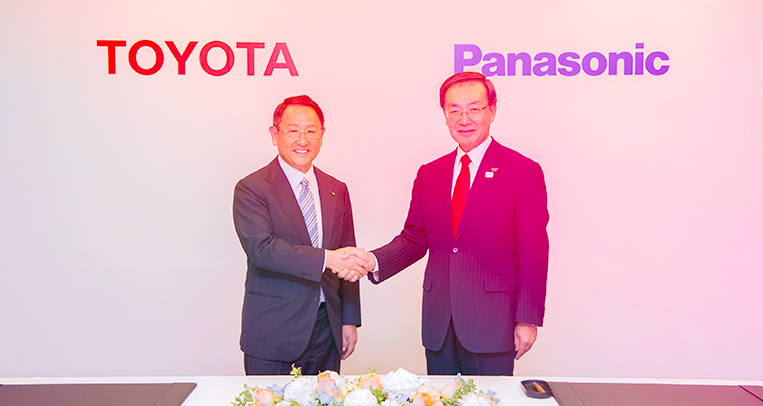

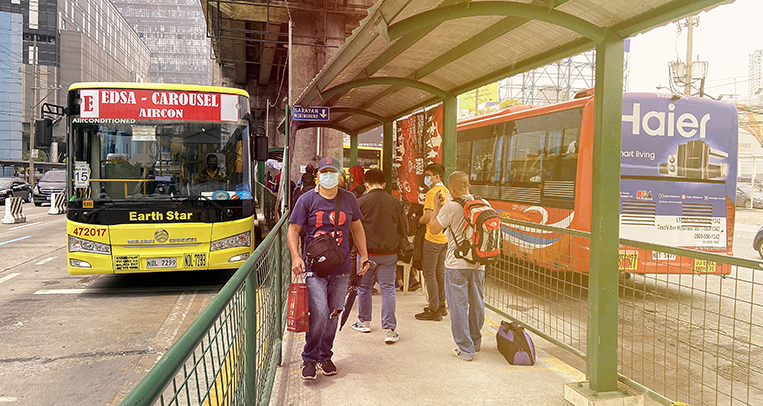







Comments